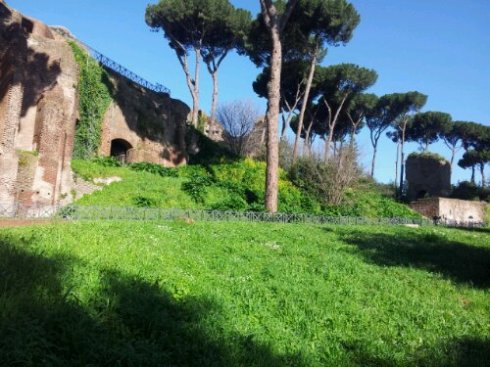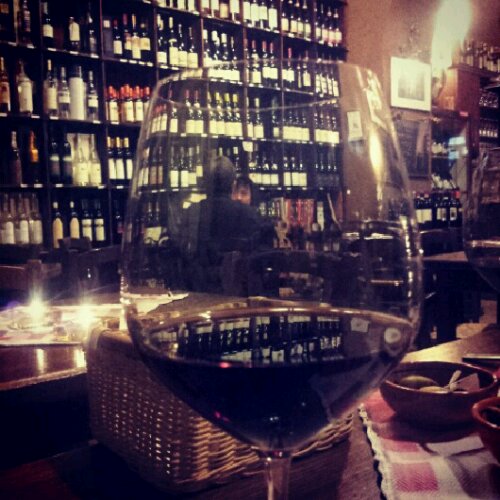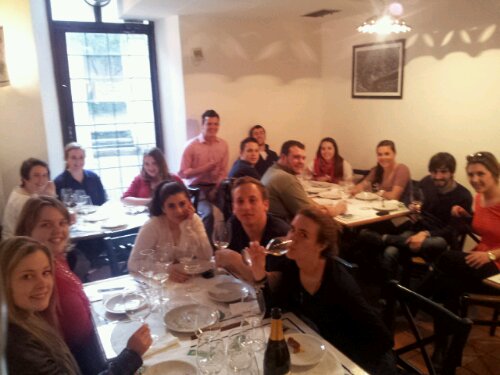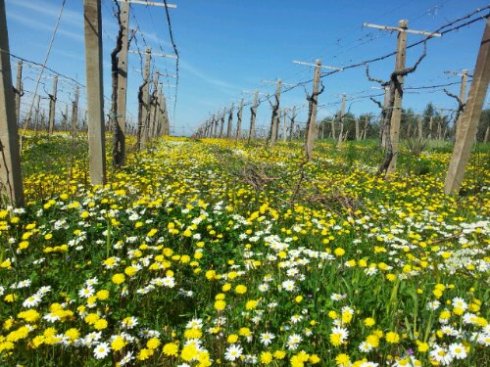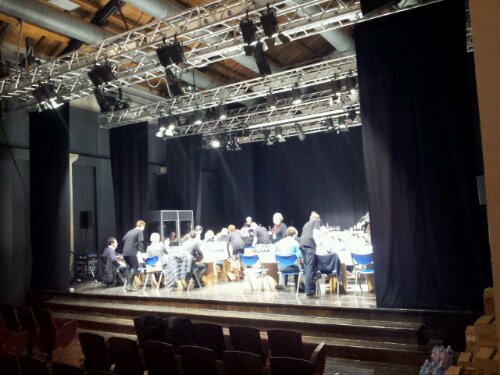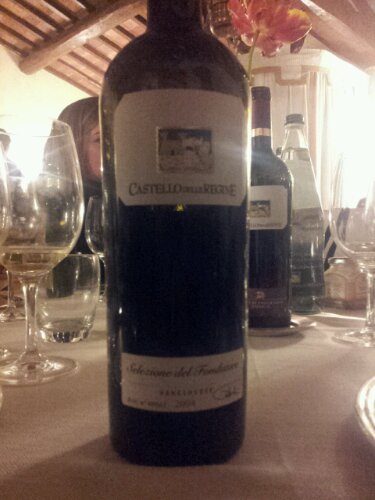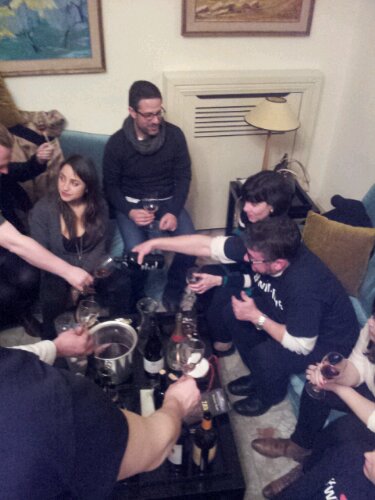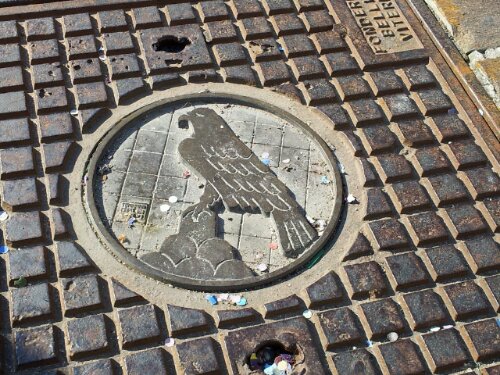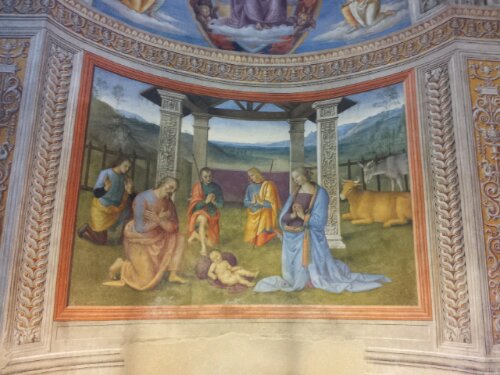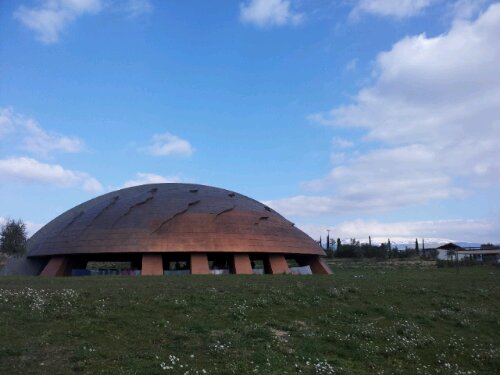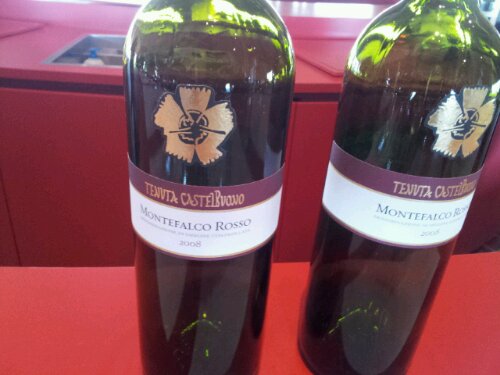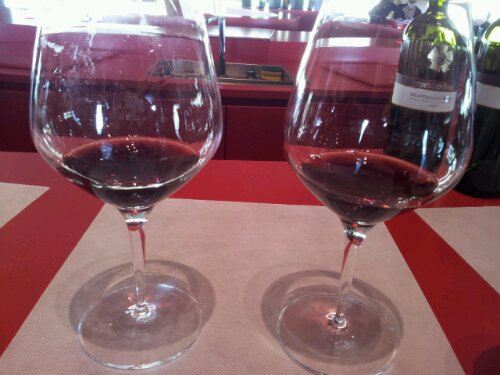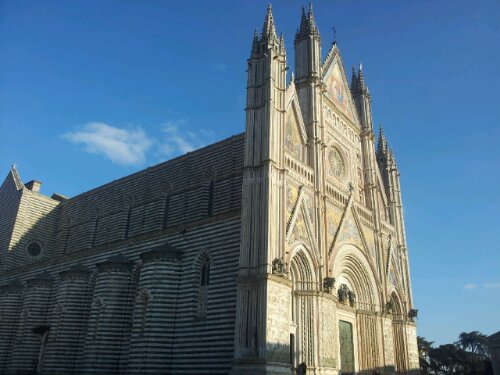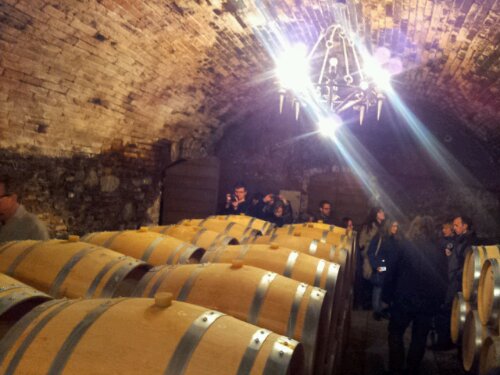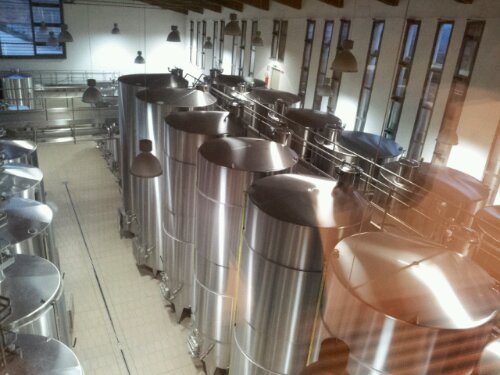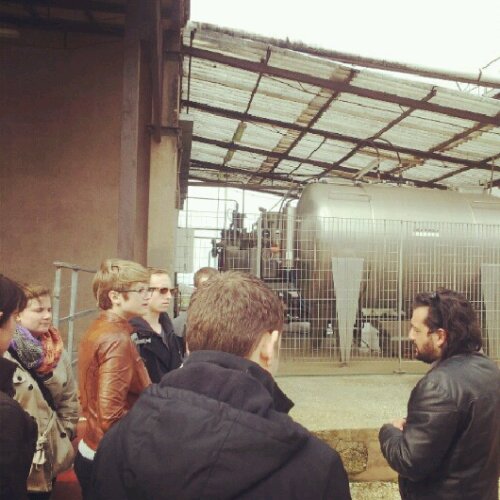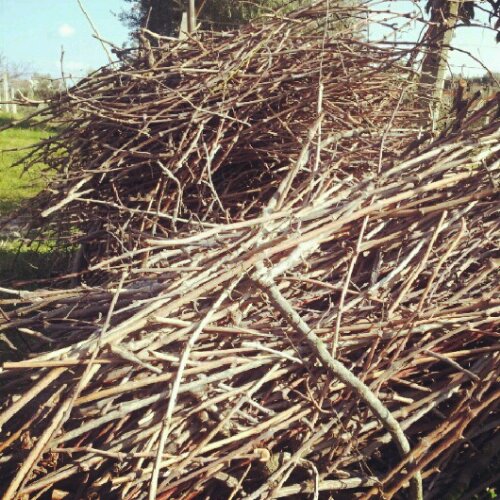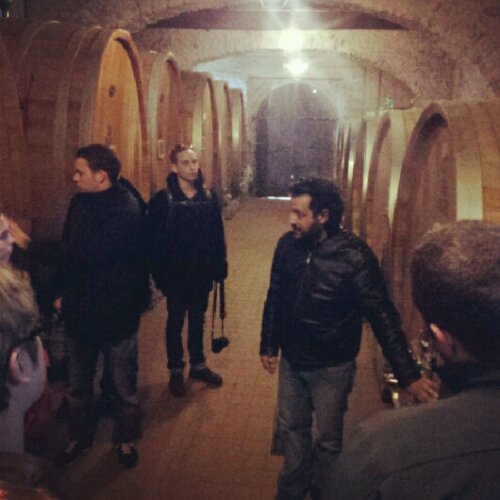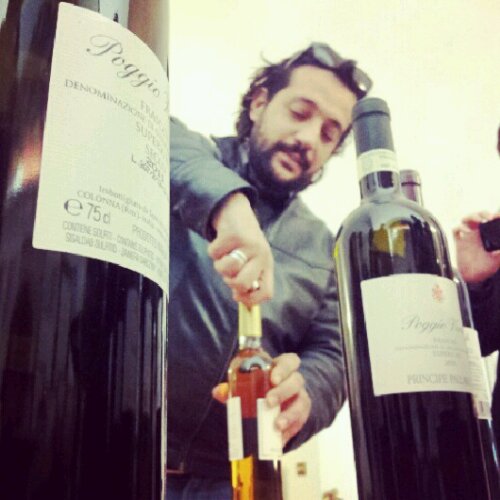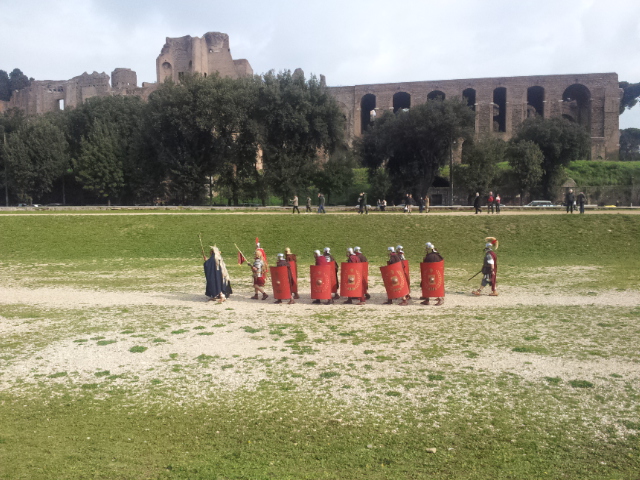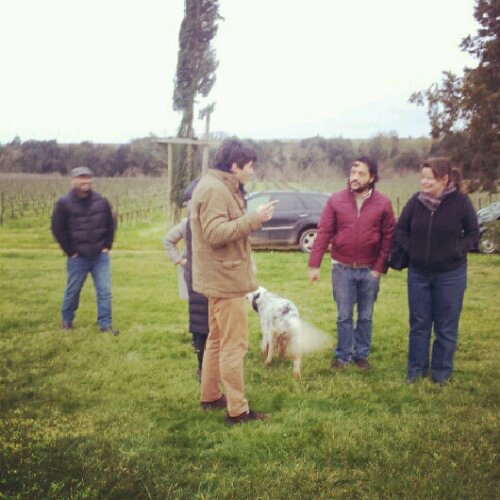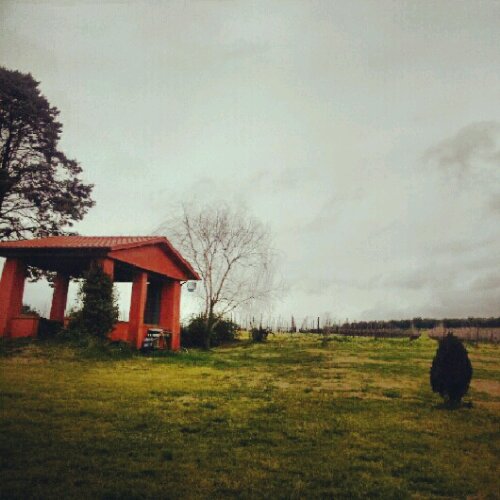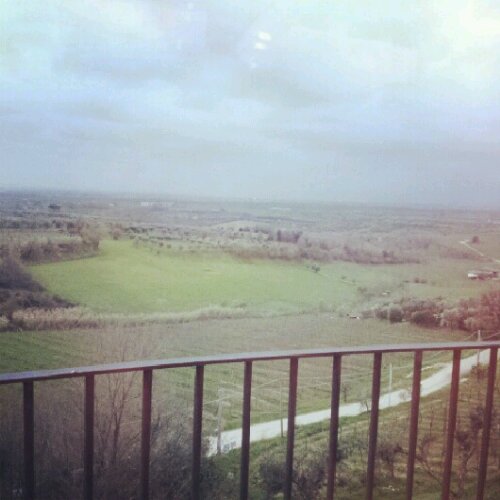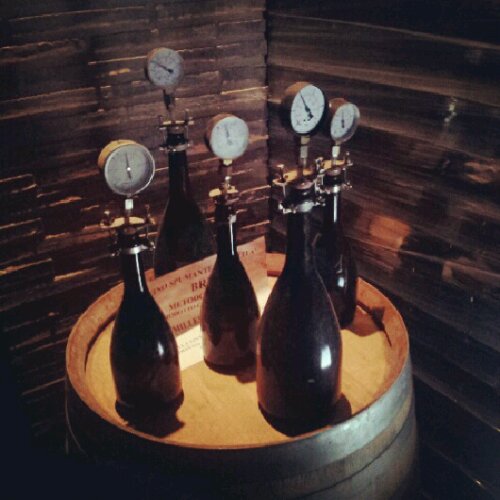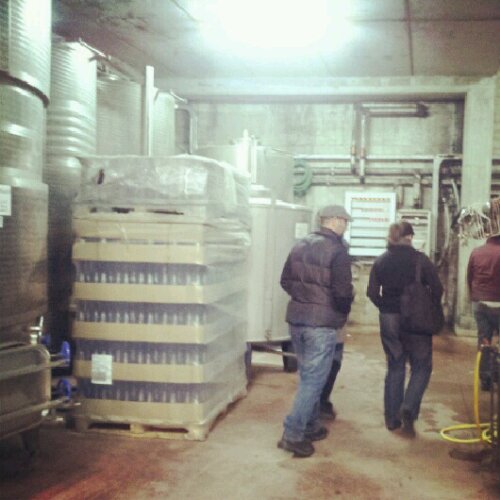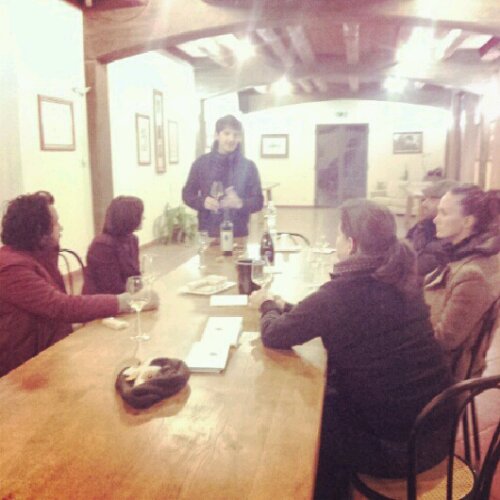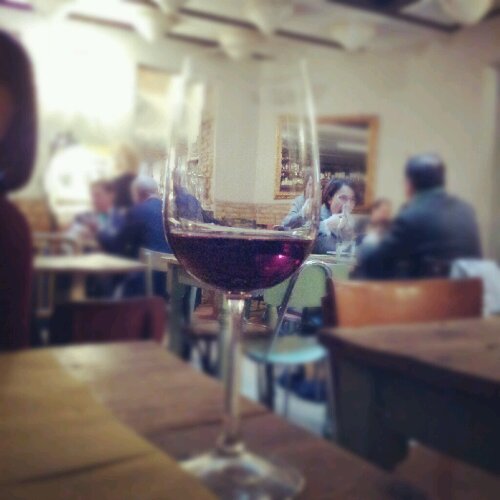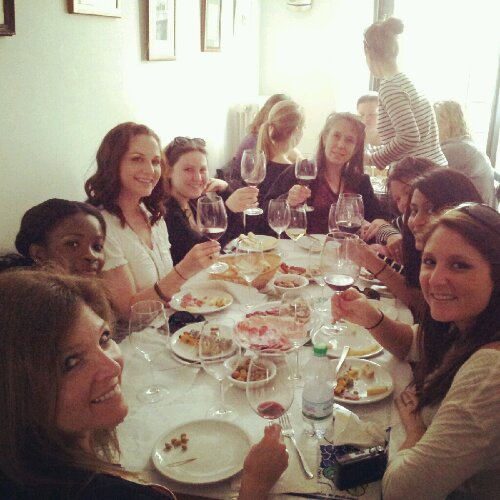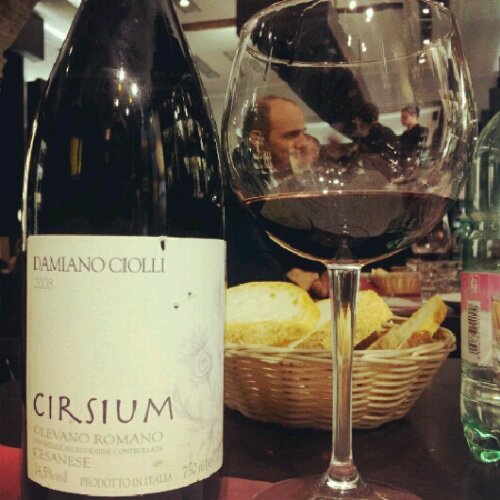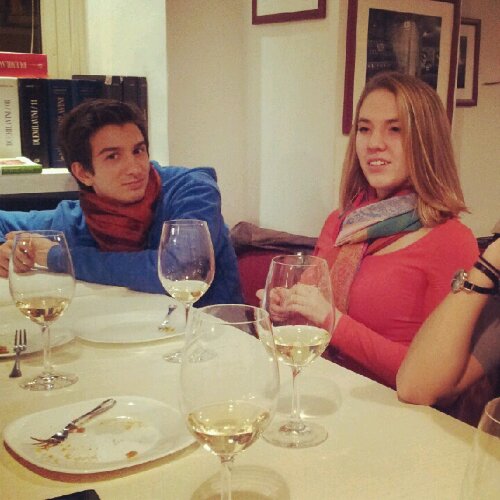There are so many edible greens on the Palatine Hill
Rome and Mosaics
13 MayI asked Antiqua Tours intern, Lauren Sauer to visit two churches and write about the mosaics inside. she did a great job!
I went to two different churches, Santa Pudenziana and Santa Maria Maggiore, to check out the mosaics in both. Santa Pudenziana was built in the 4th century and it has a mosaic in the apse. The mosaic was made around 390 and is one of the oldest mosaics in Rome. It features Christ in the center with five apostles and one female on both sides. Legend says that one of the females is supposed to be Saint Pudenziana, the saint that this church was built for. This mosaic was created in a Byzantine style because it uses different symbols. There is a cross above Christ representing the victory of Christ. On the left side of the cross there is an angel and a lion, and on the right there is an ox and an eagle. These four symbols represent the Four Evangelists, Matthew, Mark, Luke, and John.
Santa Maria Maggiore was built in the 5th century and is the biggest Roman Catholic Church dedicated to Mary in Rome. One legend says that this church was built because Pope Liberius and a patrician both had a dream that Mary wanted a church built and that she would mark where it will be built. In the middle of the summer, a place on Esquiline Hill was marked with snow and that is where the church was built. On the inside, all along the sides of the nave are stories from the Old Testament and they are shown through mosaics.
First, I visited Santa Pudenziana. I was a little intimidated at first because I went from being surrounded by the people and chaos of Rome, to the area around this church which was completely silent with almost no one around. But I did not feel so intimidated after I actually entered Santa Pudenziana. Being away from all the people and chaos was really nice because I was able to focus all of my attention on the apse mosaic. There was only me and two other people in the church. I was able to take in all the beauty from this mosaic because I did not have to worry about being in the way of other tourists trying to get a good look, being too short to see over a big group, or being distracted by younger tourists that don’t care about art yet. The setting was flawless for viewing this mosaic because, along with only a few other people being there, the lighting was perfect. I could clearly see the sparkle of the gold in the cross and in Christ’s robe, and the red really seemed to pop out of the background. The colors in this mosaic are very vibrant and I enjoyed looking at this piece.
I was a little shocked when I first entered Santa Maria Maggiore because it is enormous compared to Santa Pudenziana and there was a lot more people there. But, there weren’t too many people there to make it too difficult to look at the nave mosaics. Unfortunately though, it was cloudy and raining, making it dark inside the church because a lot of the light comes in from the windows. This is one of the good things about Rome, though. When it starts to rain, there are plenty of churches to escape to for avoiding the bad weather. The light was low but I could still see the gold shine and the colors pop in some of the mosaics. What is nice about these mosaics is that there are 26 on either side of the nave to look at and each one has a different story. One could spend an hour or two in this church just looking at the mosaics. Even with the low light I could see the beauty of each one. I would like to go back and on a sunny day to see how amazing they look with light shining on them.
I think mosaics are fascinating because of the work an artist has to go through putting all of the pieces of glass or stone used together. I enjoyed going to Santa Pudenziana to see the apse mosaics and to Santa Maria Maggiore to see the mosaics the sides of the nave. They had excellent mosaics and I would suggest others to visit both churches.
Are you interested in learning more about Roman mosaics’ We have 3 and 5 hours options, email us at info@antiquatours.com
Tasting Wine in Rome
10 AprOn our wine tour in Rome we taste wine and get to know local culture. We taste five different wines from five different regions starting and pair them with food. Our wine tour is also a lot of fun. Last night we enjoyed a wonderful Barberesco at one of my favorite enotecas in Rome.
Umbria for winelovers
11 Mar
Last month I had the honor of joining a fantastic group of #winelovers for the first anniversary of the founding of the group #winelover. Although I could not make the entire conference, I was able to join from the 15th to the 17th in which time I got a better understanding of the Umbrian wine industry. I started with the master tasting led by Master of Wine Patrick Farrell MD where we tasted wines made from both Umbrian grapes and international grapes. I found that the wines made native grapes expressed the terroir much better than the international grapes. Riesling in Umbria makes no sense to me. But it seems that in Umbria, the fashion is to dig up vineyards of Umbrian grapes and plant the typical grapes like Chardonnay, and strangely, Riesling. I do have strong opinions about this, which I will publish on my wine blog at a later date. Suffice to say that the best wines of Umbria were those where tradition is valued. Sagrantino is a wonderful grape that makes age worthy wines that I want to drink for years to come.
On Saturday we had winery visits which also included towns such as Montefalco and Orvieto. Umbria is a great place to visit in Italy because it has a wonderful food and wine tradition but also has great cultural wealth, both in the modern -like the Tenuta CastelBuono winery-and the ancient. From Etruscan to Roman to Gothic to today, I think Umbria is a perfect location for those who want to combine cultural experiences with food and wine experiences. Truffles. That is all I need to say. Overall, I really great experience that helped me understand Umbrian wine and culture more. We’ve just added a food, wine and culture excursion to Orvieto from Rome. My advice? Skip Tuscany and enjoy Umbria.
Frascati Winery Visit
5 Mar
Last Friday, Ettore and I accompanied a group of 16 wine students to a winery in Frascati. Visiting wineries is essential for gaining a real understanding of winemaking in general. We learned about winemaking from the vineyard to the bottling and everything in between. Wine is a delicate relationship between man and nature and wine is a product of that relationship. At the winery we get to meet the winemakers, understand better what terroir really means. The best part is that wineries are usually in beautiful locations and always a nice excursion from Rome. Of course at the end of every winery tour there is a wine tasting.
A Visit to Marco Carpineti Vineyard and Cantina in Cori
12 FebDuring our wine and cultural excursion from Rome to Sermoneta and Cori, we visit the Marco Carpineti winery in Cori to taste their wines and have a homemade lunch. We will first tour the cantina and vineyards where we will learn about the hard work that goes into producing wine. This winery is special not only because they maintain an organic vineyard, but also because they are making an effort to use only native grapes. These are grapes that are local to the region such as Nero Buono and Bellone. Thousands of people make an effort to make day trips to Tuscany from Rome, but we suggest trying something new and unique that is a shorter distance from Rome, which you give you time to visit more places and really enjoy your wine and food tasting experience.
Wine Tour in Rome
9 FebA wine tasting tour is a great way to learn about the vast and complex world of Italian wine. We visit historic enoteche in Rome, taste great wine in relaxed and very “Roman” locations. On a group tour you have the opportunity to meet new friends, or you can book a private tour for you and your friends. We choose our locations based on quality of products offered. Drink wine, taste delicious food and enjoy Rome. Taste wine with us in Rome…
Interested in joining a group wine tour or organizing a private tasting? Email us at info@antiquatours.com


